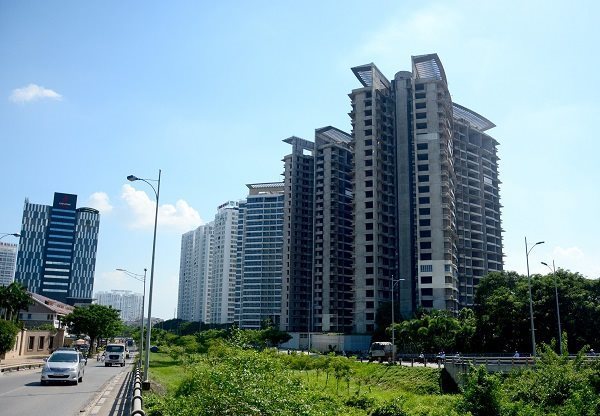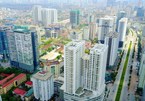What happened?
The succession of gloomy days nearly 10 years ago began when Resolution No 11 was released which requested the State Bank of Vietnam to cut lending to non-production fields, especially real estate.

As capital flow was interrupted, real estate developers left a huge amount of bad debts for banks, which analysts called a ‘blood clot’.
Many real estate firms had to bargain away their projects, and underwent reshuffling.
Because of the supply-demand imbalance, real estate prices plummeted.
Hoang Anh Gia Lai, a giant real estate developer, had to sacrifice projects and run away from the market. Its Hoang Anh Thanh Binh project was sold at VND12-15 million per square meter, while the average market price was VND25-30 million per square meter at that time.
The remnants of the crisis 10 years ago still exist, reminding realtors of the lackluster period. Petro Landmark, located on the ‘golden land' of HCM City, is an example.
The buyers in the project still cannot receive apartments and cannot sell products. The project, which was praised as the ‘symbol’ of the oil and gas sector, has failed.
| Some analysts, when reviewing the real estate crisis in 2011-2013, attribute this to the rigid credit tightening policy. At the time when two-thirds of the market was in the hands of speculators, the credit crisis was the reason behind the collapse of the market. |
Some analysts, when reviewing the real estate crisis in 2011-2013, attribute this to the rigid credit tightening policy. At the time when two-thirds of the market was in the hands of speculators, the credit crisis was the reason behind the collapse of the market.
What is happening?
The 2011-2013 crisis was followed by the revival period, commencing from 2015. However, the development cycle could not last long. The market came to the end of cycle just four years later.
Like the 2011-2013 crisis, the new recession period also began from adjustments in the credit policy.
Following 2019 with ups and downs, the real estate market in 2020 is expected to experience hardships. The Q4 2019 report of the Vietnam Institute for Economic and Policy Research (VEPR) warned that 2020 would be a ‘unstable’ and ‘harsh’ year for the real estate market.
Things are even worse than predicted because of the Covid-19 pandemic.
Though real estate products are marketed in dribs and drabs, the inventory level is still extremely high. Meanwhile, real estate firms show negative financial indicators with negative cash flow and weak liquidity.
However, analysts point out the difference between the current crisis and the crisis 10 years ago. Businesses now have better capital arrangement capability. They no longer rely on bank loans, but seek capital from many different sources, including corporate bond issuance.
Linh Ha

More M&A deals in VN's real estate sector during COVID-19
The epidemic has brought great opportunities to businesses with powerful financial capability to ‘hunt’ for attractive projects and take them over.

VN real estate not hit hard by Covid-19
The Ministry of Construction (MOC) said though the epidemic has affected the real estate market, causing a decline in supply and the number of transactions, real estate prices in some localities are still on the rise.
 With purchasing power dropping dramatically and liquidity becoming alarminging weak, the real estate market is witnessing a repeat of the 2011-2013 crisis.
With purchasing power dropping dramatically and liquidity becoming alarminging weak, the real estate market is witnessing a repeat of the 2011-2013 crisis.